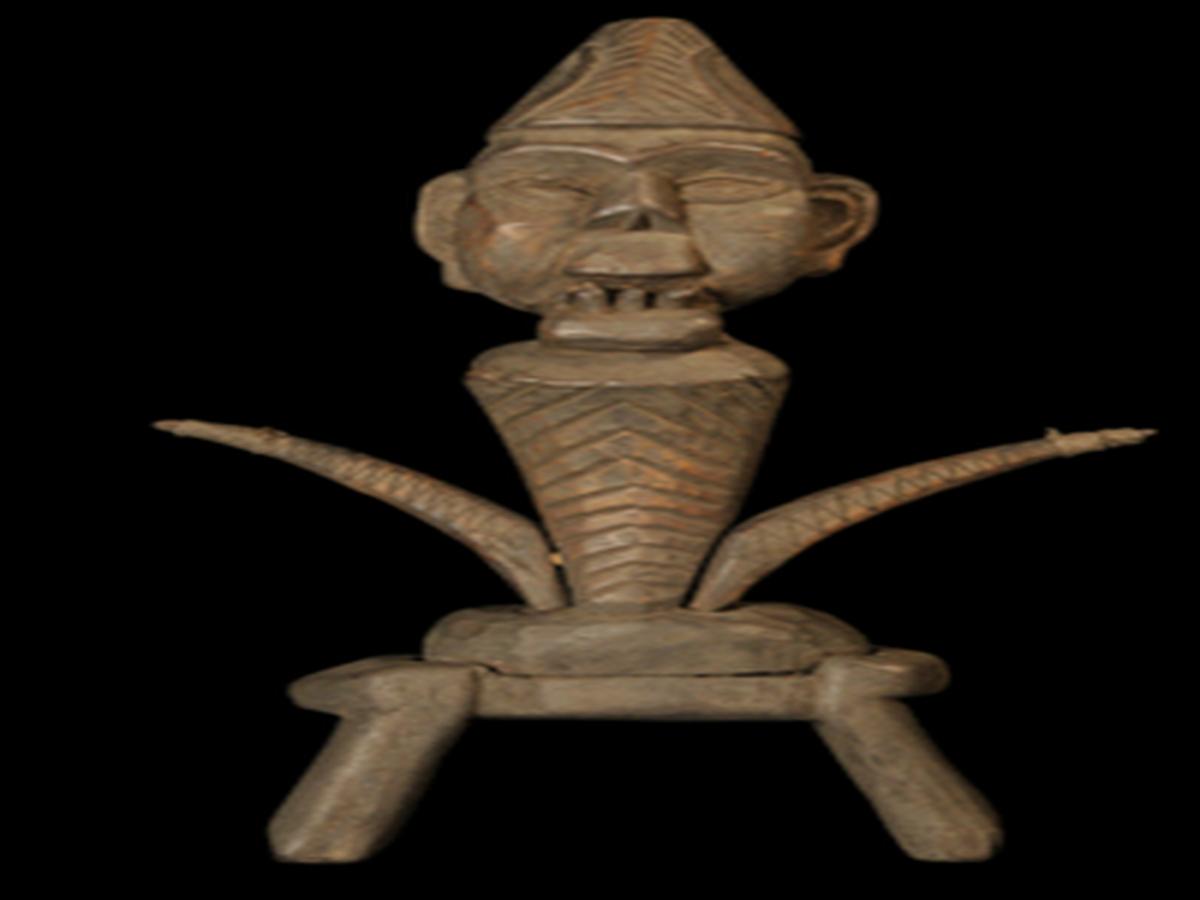State
Tribe Name
Art Type
short description
This type of wooden sculpture presents a Konyak Naga male figure, sculpted in a highly symbolic style referring to the martial and ritualistic traditions of the Naga. The effigy is put on a wooden pedestal which is in raised form, signifying probably veneration as ceremonial or commemorative object-hall. The prominent horns carved out of wood spring from the head of the effigy, which as per the Konyak tradition is used in war equipment. Horns are meant to represent commitment to those tribal belief systems about strength, valor and nature spirit connectivity. The way-his lower jaw is carved that makes one or two teeth visible thus gives a look to the figure real fierce like a standing warrior or an ancestral spirit.
Thumbnail

Filter Postion
Left
Filter Background
Off
Theme
Filter Header Image

content
Image

description
This type of wooden sculpture presents a Konyak Naga male figure, sculpted in a highly symbolic style referring to the martial and ritualistic traditions of the Naga. The effigy is put on a wooden pedestal which is in raised form, signifying probably veneration as ceremonial or commemorative object-hall. The prominent horns carved out of wood spring from the head of the effigy, which as per the Konyak tradition is used in war equipment. Horns are meant to represent commitment to those tribal belief systems about strength, valor and nature spirit connectivity. The way-his lower jaw is carved that makes one or two teeth visible thus gives a look to the figure real fierce like a standing warrior or an ancestral spirit.
Such effigies are common with the Konyak Nagas, a people well known for their warrior traditions, undertaking headhunting in ancient days, and who are also very famous for their exquisite woodcarving. Such figures form one of the essential elements of such rituals or ceremonies regarding ancestral veneration. The realistic character of the carving, both in terms of facial features and expressive posture, showcases the artistic genius of the tribe and its innate cultural connotations translatable into artifacts. Hence, this sculpture is thus an art product and even anthropological artifact-an instrument for understanding in the symbolic language of the Konyak people's identity claiming, life loss memory, and invoking protection through such images.
Such effigies are common with the Konyak Nagas, a people well known for their warrior traditions, undertaking headhunting in ancient days, and who are also very famous for their exquisite woodcarving. Such figures form one of the essential elements of such rituals or ceremonies regarding ancestral veneration. The realistic character of the carving, both in terms of facial features and expressive posture, showcases the artistic genius of the tribe and its innate cultural connotations translatable into artifacts. Hence, this sculpture is thus an art product and even anthropological artifact-an instrument for understanding in the symbolic language of the Konyak people's identity claiming, life loss memory, and invoking protection through such images.
Image Mode
landscape
promoted
On
Verified
Off
